 Finished 6/28/24 I focused on Mount Vernon and found myself in a middle grade spy novel that takes place today. OOPS! Lesson learned – read the description next time and look at the book cover 😊 The main characters in this novel are a trio of kids from Virginia who love spy-fare. They wind up putting a few of George Washington’s techniques to good use. They even bring down a spy ring. How? You’ll have to read for yourself! My favorite part – the things I learned about the Capital, Mount Vernon, George Washington’s tombs, and how Stephen Smith came up with this novel idea. I love a good back story! That Back Story  This is Book 7 in the Virginia Mysteries series. Three research trips to Mount Vernon helped Stephen find the bare bones for his plot. It’s also where he saw the real key from the Bastille, the infamous French prison. It was a gift from the Marquis de Lafayette. He traveled from France to help Washington fight, then beat the British. Some of the inspiration came from movies and television. The first and biggest, TURN, the mini-series about Washington as general and spymaster. The second came from the second National Treasure movie and its scene from Mount Vernon’s backyard. The third came from the movie Patriot Games, and it inspired the climax, the boat chase scene in the book. And finally, The American President which features a teenage daughter. Stephen switched the character to a son. George Washington, Spymaster-in-Chief This is the Battle of Long Island. Alonzo Chappel painted it in 1858, over 80 years later. The smoke is from the Maryland guns and cannon. They attacked the British so the rest of the Continental Army could escape. The real battle was fought from August 27 – 29, 1776. It was the war’s first major battle and a huge loss for the Americans. General Washington didn’t return to New York until 1783, when the war was over. For more information and photos – Battle of Long Island - Wikipedia After his loss, Washington realized he’d missed some key information. He set up his own spy ring, and he was Agent 711. If you want to learn more about the tools his spies used, read this novel. A trio of teens put a few of them to good use – like secret code names, dead drops, invisible ink, cyphers, and coded messages. If you want to learn more about the Culper Spy ring and what I wrote about it, check out George Washington’s Secret Six. Click the link and scan down to the cover. Link: Rinda Beach - Blog - Rinda Beach  Three Tombs for George? For real! I had no idea. This is the empty tomb – without a resurrection. It was supposed to be George’s, and you’ll find it two stories under the Capital Rotunda. When George Washington died in 1799, the Capitol was still under construction. It was supposed to have a glass floor so the public could see the tomb. George said no thank you. He asked Martha to build him a new tomb at Mt. Vernon, and he put that wish into his will. But Martha didn’t get it done, AND she agreed to the plan for Washington, D.C. But THAT didn’t happen either. There were problems with the cost of the project. In the meantime, George was buried in the old family tomb, #2, even though he asked for a new one. It wasn’t built until after 1830, after someone tried to steal George’s head. OOOH, Yuck! That someone also vandalized the corpses of a few of George’s relatives too. That’s when John Washington, Mt. Vernon’s owner in 1830 finally built the new tomb, #3. If you’d like to see it, take a look at the cover again. It’s on the bottom left. And the other question, why did George want a new tomb? The novel from Mt. Vernon said . . . “Apparently when it rained, the crypt often flooded, disturbing the tombs and graves inside.” For more information and photos – Link: Washington Tomb · George Washington's Mount Vernon  A Subway System, Under the Capital? I had no idea what was under the Capital until I read this middle grade novel! There are 3 of them; they’re called people mover systems. I think it’s a great name! They connect the Capital to all the Senate office buildings, but only one goes to the House. They move our Senators and Representatives to work every day. The first line was built in 1909. A monorail was installed in 1960, then again in 1965. After 1993 the trains ran automatically. You can travel on it too, but only if you’re on a Capital Complex tour, AND you must be with a staff member who has the proper ID. This is the floor plan for the Capital basement. The House and Senate systems don’t begin/end in the same places, but they are connected by a labyrinth of tunnels. You’ll find the Senate subway terminal on the bottom right. They connect to the Russell, Dirksen, and Hart office buildings. If there’s a vote in the Senate, the Russell subway is restricted. Only Senators and their staff can ride. Since 9/11, there are also restrictions for visitors who want to ride the subway to either the Hart or Dirksen building. The Rayburn subway terminal for the House is on the top left. You’ll find underground walkways to the rest of the House office buildings on the bottom left. If there’s a vote in the House, the subway is also restricted. Only Congressmen and their staff can use it. For more information and photos Link: United States Capitol subway system - Wikipedia  Amazon’s Description: Dead drops, cyphers, and invisible ink are all part of a mystery that even spymaster George Washington would love. Sam, Derek, and Caitlin love solving mysteries, and when they visit Washington, DC, spies are lurking. What starts out as a fun game of pretend on the National Mall turns all too real when they follow a mysterious man to a meeting deep within the Capitol. To keep government secrets from falling into the wrong hands, the kids must work with federal agents and travel to historic Mount Vernon for a state dinner with the president and his son. Dead drops, cyphers and spy chases are all part of what their most dangerous adventure might be ever—if it isn’t their last. Spies at Mount Vernon is the seventh book in The Virginia Mysteries series, but it also makes a great standalone read. The story is the perfect complement to social studies units covering George Washington as well as field trips and family vacations to Washington, DC and Mount Vernon. If you enjoy mystery and adventure like the Hardy Boys, Nancy Drew, Magic Tree House, or National Treasure, you’ll love author Steven K. Smith’s exciting middle-grade series. The stories are modern-day fictional mysteries with twists of real locations and events from Virginia history. These fast-paced books are popular with both boys and girls ages 7-12, appealing to even reluctant readers  Charles Carroll of Carrollton was a big reader. His library included a complete set of Ben Franklin’s books, including Poor Richard’s Almanac. Charley read it in my manuscript, so I read it too. Ben wrote 670 sayings over the 32 years he published the almanac. They show his character. Mine and Charley’s too. I picked 10 themes that popped up across those 32 years. Then my favorite sayings for each theme. They’re listed in almanack order. RICHES Ben had 13 things to say about them, and I picked my Top 5. 24. A little house well fill'd, a little field well till'd, and a little wife well will'd, are great riches. 224.* He that is rich need not live sparingly, need not be rich. 512. The poor have little, beggars none, the rich too much, enough not one. 648. Who is rich? He that is content. 649. Who is rich? He that rejoices in his portion. THE PHILOSOPHER'S STONE I’d never heard of one until Harry Potter. Ben had, and he wrote about it, twice. Here are both of them. 99. Content is the philosopher's stone, that turns all it touches into gold. 288.* I have never seen the philosopher's stone that turns lead into gold, but I have known the pursuit of it turn a man's gold into lead. AGE Ben wrote about age 6 times. Here are my 3 favorites. 9. At 20 years of age the will reigns; at thirty the wit; at 40 the judgment. 149. For age and want save while you may; no morning sun lasts a whole day. 492. The golden age never was the present age. FEAR Ben only had 4 sayings about fear, and I get to share them all. 82. Beware, beware! He'll cheat without scruple, who can without fear. 139. Fear God, and your enemies will fear you. 140. Fear not death; for the sooner we die, the longer shall we be immortal. 141. Fear to do ill, and you need fear nought else. FOOLS Ben had a lot to say about them – 25 to be precise, but I only picked 5. 148. Fools need advice most, but wise men only are the better for it. 200. He's a fool that cannot conceal his wisdom. 300.* It is ill-manners to silence a fool, and cruelty to let him go on. 495.* The heart of the fool is in his mouth, but the mouth of the wise man is in his heart. 518. There are no fools so troublesome as those that have wit. SLOTH Ben called it laziness, and I got to pick all of his sayings. 28. All things are easy to industry, all things difficult to sloth. 113. Diligence overcomes difficulties, sloth makes them. 448. Sloth and silence are a fool's virtues. 449.* Sloth (like rust) consumes faster than labor wears. The used key is always bright. LOVE Ben had a lot to say about love, 14 sayings to be exact. I picked 6. 126. Dost thou love life? Then do not squander time; for that's the stuff life is made of. 218. He that falls in love with himself, will have no rivals. 281. If you would be loved, love and be lovable. 338. Love your enemies, for they tell you your faults. 339. Love your neighbor; yet don't pull down your hedge. 638. Where there's marriage without love, there will be love without marriage. PRIDE Ben had 11 things to say about pride. These are my 5 favorites. 61. As pride increases, fortune declines. 424. Pride breakfasted with plenty, dined with poverty, supped with infamy. 425. Pride dines upon vanity, sups on contempt. 426. Pride is as loud a beggar as want, and a great deal more saucy. 516. The proud hate pride in others. FRIENDS Friends were important to Ben. He wrote 15 sayings, but I’m only sharing 6. 79. Be slow in choosing a friend, slower in changing. 153. Friendship increases by visiting friends, but by visiting seldom. 188. Hear no ill of a friend, nor speak any of an enemy. 233. He that sells upon trust, loses many friends, and always wants money. 520. There are three faithful friends, an old wife, an old dog, and ready money. 574. 'Tis great confidence in a friend to tell him your faults, greater to tell him his.  ENEMIES Ben wrote about them 8 times. Here are my 6 favorites. 115. Do good to thy friend to keep him, to thy enemy to gain him. 116.Doing an injury puts you below your enemy; revenging one makes you but even with him; forgiving, it sets you above him. 139. Fear God, and your enemies will fear you. 188. Hear no ill of a friend, nor speak any of an enemy. 284. If you would keep your secret from an enemy, tell it not to a friend. 338. Love your enemies, for they tell you your faults .  Amazon’s Description: A historical reference for scholars interested in early-American thought and its repercussions later in history. Written under the pseudonym of "Poor Richard" or "Richard Saunders," Poor Richard's Almanack (sometimes Almanac) is a collection annual publications (between 1739-1758) of the famous and late Benjamin Franklin. The Almanack contains typical almanac features, such as: calendar, weather, poetry, figures of speech, astronomy, and astrology. Many of Franklin's writings in Poor Richard's Almanack also contain math exercises, and satirical proverbs written by Franklin himself. This version of the book contains the Almanack (1739-1758) with also four letters/conversations between Benjamin Franklin and George Washington (1789) and Benjamin Franklin addressing Robert Morris (1780). The purpose of providing letters two decades after the final piece of the Almanack was published is to provide readers with a historical framework of how entries of the Almanack reflect not only Benjamin Franklin's anonymity but also at that time, early-American consciousness' of attitudes which laid the blueprint for the shaping of early-America and later-America. 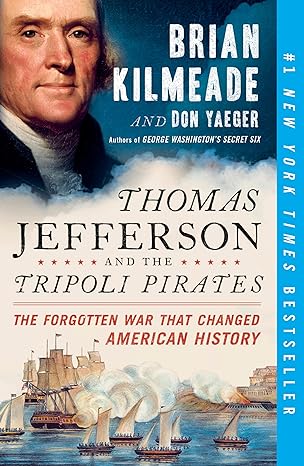 4/2/24 I knew I had to read this when the treaty with the Barbary pirates came up as one of the big events of 1794. Once I picked up the book, I realized it started earlier, in 1785, and it finished in 1809. The prologue begins when Captain Richard O’Brien’s ship is captured in July of 1785, two years after the end of the Revolution. The pirates kept the ship, but they threw the crew into slavery. Most were freed 10 long years later. A few died as slaves. Chapter 1 begins in March of 1786 when Thomas Jefferson and John Adams met to talk about piracy, and how they could free O’Brien’s crew. They’d already been held as slaves for 3 years. A treaty wouldn’t be signed into law until 1794. The US paid tribute to the Barbary states. In return they promised to leave American merchant ships alone, and to free the sailors who’d been forced into slavery. Would you believe during that time American merchants had to buy insurance for their ships sailing the Mediterranean? Or that they paid 20 times the rate of European merchants? But there was no choice. Our new country was deep in debt from the Revolution, and it needed the trade from southern Europe. American merchants no longer had British protection. Even King George III paid tribute to the Barbary states. This is a modern map of the Barbary states. Their boundaries may have changed, but their names haven't. Can you find, east to west, Morocco, Algeria, Tunisia, and Libya? In May of 1800, William Bainbridge was given command of the USS George Washington, one of the first ships in the American navy. It was carrying a few of the things promised in the treaty, but the gold and silver was delayed. Bainbridge knew that meant trouble, but he had no idea. When its ruler, the ‘Dey’ didn’t get it, he decided the ship should carry his ambassador and entourage across the Mediterranean to Constantinople, the capital of the Ottoman empire. (Now known as Istanbul, Turkey.) He wanted the Americans to deliver his own yearly tribute. Bainbridge let an Algerian pilot take him to the dock, and he parked the USS George Washington right under the fortress guns. BIG Mistake! Bainbridge didn’t realize until he was ready to leave. He couldn’t – unless – he did what the ruler wanted – sail everyone to Constantinople – the ambassador, 100 attendants, 100 captive Africans (AKA slaves). Plus, gifts that included 4 horses, 25 cows, 150 sheep, 4 lions, 4 tigers, 4 antelopes, and 12 parrots. But the final blow – the ‘Dey’ ordered the American flag taken down, and the Algerian one put up. The ship’s 7 guns had to fire a salute to the new flag. Bainbridge thought it was the worst thing ever. That it would never be forgotten. Turns out it was, and the worst was yet to come, , and it didn't stop. It was now July of 1803, and Bainbridge was commanding the USS Philadelphia. When he was chasing an Algerian cruiser, he struck some rocks, leaving his ship dead in the water. Bainbridge would surrender the ship and his crew. Then it got WORSE. A storm came up and swept the Philadelphia free. The Algerians controlled the ship and forced their slaves, the American crew to fix their own ship. To arm it with their own cannons. Later the Algerians planned to turn them on our navy. But Bainbridge had the last laugh – he was still a hostage, but he managed to send intelligence to the American Navy in the Mediterranean. They found a way to destroy the Philadelphia. Yes, they lost a ship, but they kept the Algerians from using it against them. The last chapters are about how the Americans almost toppled the Bashaw (the Dey’s boss). They couldn’t because an American diplomat negotiated a treaty in 1805 that undercut our fighting forces. It paid a tribute for the return of our sailors, but it ended the war. It made the seas free for merchant ships again, and captives would be treated like prisoners of war, not as slaves. President Jefferson was satisfied to see an end to the conflict. But the piracy finally ended after the War of 1812. The Navy returned to Tripoli in 1815. American ships and their guns made it clear the days of piracy were over. A treaty was signed, and the US didn’t pay a dime of tribute. This time the Barbary States paid restitution to the Americans. Don’t forget to check out the back matter. It’s all about each historical event and the men who shaped them.  Amazon’s Description: This is the little-known story of how a newly independent nation was challenged by four Muslim powers and what happened when America’s third president decided to stand up to intimidation. When Thomas Jefferson became president in 1801, America faced a crisis. The new nation was deeply in debt and needed its economy to grow quickly, but its merchant ships were under attack. Pirates from North Africa’s Barbary coast routinely captured American sailors and held them as slaves, demanding ransom and tribute payments far beyond what the new country could afford. Over the previous fifteen years, as a diplomat and then as secretary of state, Jefferson had tried to work with the Barbary states (Tripoli, Tunis, Algiers, and Morocco). Unfortunately, he found it impossible to negotiate with people who believed their religion justified the plunder and enslavement of non-Muslims. These rogue states would show no mercy—at least not while easy money could be made by extorting the Western powers. So President Jefferson decided to move beyond diplomacy. He sent the U.S. Navy’s new warships and a detachment of Marines to blockade Tripoli—launching the Barbary Wars and beginning America’s journey toward future superpower status. As they did in their previous bestseller, George Washington’s Secret Six, Kilmeade and Yaeger have transformed a nearly forgotten slice of history into a dramatic story that will keep you turning the pages to find out what happens next. Among the many suspenseful episodes: ·Lieutenant Andrew Sterett’s ferocious cannon battle on the high seas against the treacherous pirate ship Tripoli. ·Lieutenant Stephen Decatur’s daring night raid of an enemy harbor, with the aim of destroying an American ship that had fallen into the pirates’ hands. ·General William Eaton’s unprecedented five-hundred-mile land march from Egypt to the port of Derne, where the Marines launched a surprise attack and an American flag was raised in victory on foreign soil for the first time. Few today remember these men and other heroes who inspired the Marine Corps hymn: “From the Halls of Montezuma to the Shores of Tripoli, we fight our country’s battles in the air, on land and sea.” Thomas Jefferson and the Tripoli Pirates recaptures this forgotten war that changed American history with a real-life drama of intrigue, bravery, and battle on the high seas
0 Comments
 Finished June 24, 2024 Neferura is the plus one in this series. She’s not related to Jagger Jones, but they’re written by the same author . . . who happens to be an Egyptologist. There aren’t many stories of ancient Egypt, and this one is fascinating. Travel back to a world 1400 to 1500 years before Christ when the pyramids were built. The author paints a picture of Neferura’s life. From the food she ate, to her clothing, to her job as priestess. Add in political drama as Neferura battles the intrigues of her mother and half-brother. They’re fighting for wealth and power, and they don’t care who lives, or dies. The main characters are real. The author took the plot points from their lives and connected them into a novel.  When I read historical fiction, I always wonder what’s true and what’s made up. This is a statue from the British Museum. The man is Senenmut, and he’s holding Princess Neferura. They’re both in this book, and they both lived in Ancient Egypt. The real Neferura was the daughter of two pharaohs. Her mother, Hatshepsut. Her father, Thutmose II. She didn’t become pharaoh, but she had some great opportunities. The back matter said Neferura was the wife of the god Amun. Her mother and grandmother were too. Her grandmother, Ahmose-Nefertari, is long dead, but her influence isn’t. It’s the spark that sets the plot in motion. The story focuses on how and why Neferura might have married her half-brother, Thutmose III. There’s no record of it, but there’s research that points that way. It centers on the fight to be in charge. In other words, politics as usual. Senenmut is also in the novel. His first job, ‘Steward of the God’s Wife.’ That’s Hatshepsut. She fights to become pharaoh in her own right. Senenmet’s next job, ‘Steward of the King’s Daughter. That’s Neferura. In the novel he’s her tutor and art patron, and he did have multiple statues made with a young Neferura. Sources: Neferure - Wikipedia & Senenmut - Wikipedia Meet Neferura’s mother, AKA Hatshepsut. She was an incredible woman in any age, but she ruled during her lifetime. She was the Great Royal Wife of Thutmose II, her half-brother. She went on to become regent when he died. Thutmose III was two years old, too young to rule. Eventually Hatshepsut made herself Pharoah. She wasn’t the first, but she was the most successful. When Thutmose came of age, they became equal pharaohs. I bet that went over well. NOT! The most unusual thing about Hatshepsut is that she’s a woman and a man in statues. That’s strange, but Neferura’s author said pharaohs are Horus the god, come to earth. No wonder she gave herself a beard. People will do almost anything to gain power, then to hold onto it. After she died, her statues were destroyed. Her monuments vandalized, and her achievements given away to other pharoahs. That was 20 years after her death, and Thutmose III was pharoah for most of that time. You’d think he would have done it sooner. Historians still wonder who did it and why. Was it Thutmose or his son Amenhotep II? Was it for ritual/religious reasons or hate? Either way, it didn’t work. Hatshepsut was the longest female ruler in Egypt, and, the most successful. Source: Hatshepsut - Wikipedia  Meet Thutmose III. Hapshepsut was his stepmother, and aunt at the same time. In this story he’s positively evil, but deservedly so. That’s because Hapshepsut sent him off to the army as soon as she could get rid of him, and if he died, so much the better. But it is true –Thutmose really was the commander of Hapshepsut’s army. It’s also true that Thutmose had a Royal Wife named Satiah. She’s in the story, and her son was Thutmose’s first son and heir, Amenemhat. He died young and never got to become pharaoh. Link: Thutmose III - Wikipedia  And the last major character is Satiah. She didn’t get a statue, but she’s on a painting in Thutmose’s tomb. Her father may/may not have been Ahmose Pen-Hekhebet, who has a minor role in this novel. And her son was Amenemhat. Some sources say he was Neferura’s son. This is that painting, from the tomb. On the top half, Thutmose III is in a boat with his mother, Iset. In the bottom half, start on the right. You’ll see Thutmose as a child with his mother represented as a tree. Behind them Thutmose is leading a family procession. Next in line is the King’s Wife, Meritre-Hatshepsut. Her son became the next pharaoh. Satiah comes next as a King’s Wife because her son died before he could become pharaoh. The third queen is another King’s Wife, Nebtu, and last in line is the King’s Daughter, Nefertari. Link: Satiah - Wikipedia  Amazon’s Description: There are many paths to power. They all come with a price. Neferura, princess and high priestess of Kemet, knows her duty is to her people. When your mother is the great Pharaoh, it is hard to forget. But Neferura's unique position at court comes with high stakes for her country, especially when she's forced to serve her vile half-brother, a man determined to stop Neferura's potential rise. Peace, it seems, never lasts for women who wield power in the open. Especially when they cross a vengeful man. When Neferura overhears Thutmose's plot to end her mother's rule, she knows he must be stopped, no matter the cost. The discovery of a mysterious tattooed wisewoman and her shadowy network of spies offers an uneasy alliance. But the wisewoman wields more power than Neferura knew possible -- power with the potential to rival her own. Neferura must decide where her loyalties lie and how much she's willing to sacrifice to protect the people she loves before everything crumbles at the hands of a tyrant.  Finished Memorial Day Weekend This isn’t really part of the House of Oak series, but it could be. I met Belle Heartstone in Book 3. She was once engaged to Timothy, Viscount Linwood. Then Jasmine Fleury arrived and saved them from a match neither one wanted. Belle is also distantly related to Sebastion Carew from Book 2, so she really could be part of the series. Belle’s story begins a year after her broken engagement. She’s determined to choose her own husband, and she picks Colin Radcliffe, the new Marquess of Blake, after much research. He turns her down, saying they both deserve to marry someone they know and respect. He even suggests the unbelievable – that she doesn’t need to marry. That sets the stage for an unusual relationship – they become business partners. Belle starts the partnership – anonymously. It’s the beginning of an unexpected friendship. You’ll have to read to find out how the adventure ends, and her identity is uncovered. Some of My Favorite Parts:  1. The Riddles – Belle and Colin conduct business through letters, from England to India, and back again. Each letter ends with a riddle. Don’t worry, if you don’t see the answer. You’ll find it in the Author’s Notes. 2. Occam’s Razor – Have you heard of it? Colin had. He knew the simplest solution to a problem was probably correct. It helped him figure out Belle’s identity. 3. Belle’s best line – “She really needed to reassess how much bad literature she consumed.” It cracked me up! 4. Colin’s best action – “Colin slashed another dandelion with his walking stick . . .” When you have to take a whack at a dandelion, you know you’re having a bad day.  5. “The unexamined life is not worth living.” – The quote came from Socrates who chose death over losing intellectual debate. Colin wants it on his tombstone – he believes in being brutally honest, even with himself. 6. Marriage – When Belle married during the Regency period, she lost her rights to a husband. Her money and her very freedom belonged to him. Choosing well – critical! 7. “Seeing someone” – Both Belle and Colin think they really know each other, but they need to refocus to see each other down to the core. 8. Belle’s initials “LHF” – In the beginning they stand for ‘Little Heart Full.” But by the end they’ve changed to something better, a gift Colin unknowingly gave her.  Amazon’s Description: Miss Belle Heartstone—heiress and savvy businesswoman—needs a husband. Immediately. As in, yesterday would not have been soon enough. Her mother’s attempts at matchmaking have been disastrous. So Belle decides to solve the problem her way—survey the market and purchase the best groom available. Colin Radcliffe, Marquess of Blake—debt-ridden and penniless—needs a large infusion of cash. Desperately. Preferably cash that does not come with a wife attached. It is no surprise, then, when he receives Miss Heartstone’s brazen proposal—her cash, his title, their marriage—that he politely declines. But before he leaves her, Blake suggests something truly radical: Maybe before finding a husband, Belle should find herself. His simple words send them both on an unexpected journey, spanning continents and years, entwining their lives in ways neither could have foreseen. Can two lonely souls move past societal expectations and forge a unique life together? Please note: The basic storyline of Seeing Miss Heartstone was originally published as a novella titled, An Invisible Heiress, in the Spring in Hyde Park anthology. This current novel is a greatly expanded version of that plot, adding over 200 pages of text and creating a more robust, well-developed story.  Finished Late April Do many books come into being because readers ask? Not many, but this one did because they wanted a happy ending for Daniel Ashton. It came years after Book 4. Perhaps Nichole needed that time to come up with a character and a problem to fit the time portal. The female lead – Fossi Lovejoy. What a great name! Fossi is unusual – she’s a genius at math, but her family thinks she’s just plain odd. Her value must equal whatever they put into keeping her alive. Ouch! Can you imagine your family saying that? Double Ouch!  Fossi tells the story, even though Daniel appeared in two earlier books. Her name is an Italian verb for something that no longer exists. This line got me – “Wouldst that I had been . . .” Imagine questioning your own being? No wonder Fossi loves math and numbers – They don’t lie, like people do. We get to know Daniel through Fossi as she watches his actions and tries to understand him. Daniel is a professional plasterer – he’s always trying to patch the walls in his world. He’s also not the only one who can see behind masks and walls. Fossi can, and she wonders if his defenses are shaped like a monolith or more like a maze.  I’ve written a lot about character, but nothing on plot. Fossi enters the story to solve a mathematical problem with the portal. It’s key to the story, with a creative twist. I thought Book 5 didn’t have back matter. I’m glad it does! Fourier’s Nemesis is Fossi’s math problem, and I wondered if it was real . . . Well, partially! This is Joseph Fourier. He was a French mathematician/physicist who worked on waves, heat transfer, and vibrations. His work is known as the Fourier Series. And the Nemesis theory – Nichole made it up. Brilliant!  Amazon’s Description: Time is not a river. It is a vast cosmic sea, where each life exists as rippling circles on its surface. Usually, the eternal ocean oscillates in harmony, all lives breathing up and down as one. But something has broken this equilibrium, turning the cosmic ocean into turbulent waters . . . In 1828, Daniel Ashton, Lord Whitmoor, faces a problem of epic proportion—an earthquake has caused the time portal in Duir Cottage to stop functioning, disrupting the cosmic ocean and threatening Time itself. He needs a computer to crunch numbers and provide a solution. But with the time portal on the fritz, a computer is two hundred years in the future. So Daniel sets out to find the next best thing—an anonymous mathematical genius of legendary renown. Fossi Lovejoy knows she is too odd, too intelligent, too old and too poor to ever marry. So she busies herself in her father’s ministry and her mathematical equations, choosing to focus on what she has, not what she lacks. But then Lord Whitmoor publishes one of her private theorems, taunting her to respond. Fossi is compelled to action—when you have so little in life, you defend the few things that are yours with ferocious tenacity. Even if it means matching wits with the infamous Lord Whitmoor. Can two people past their youth find unexpected love? This final installment in the Amazon bestselling House of Oak series can easily be read as a stand-alone book. Check out the other books in the series:  Finished 3/11/24 In Book 4, two characters finally take the lead. Timothy, Viscount Linwood was an unlikeable character in the first 3 books. Stiff, with no sense of humor. Now we learn why – he followed 313 rules. I’d be stiff too! Jasmine Fleury was likeable, but barely mentioned in the other 3 books. I knew she was a free spirit, an artist. That she believed souls could find each other across time and space. Sounds like fantasy to me, and this story was a good one! When Timothy comes forward to 2015, it’s Jasmine who discovers his back story. She helps him find himself. And it’s Timothy who helps Jasmine piece the past back together again. They’re a match made only in fantasies. My favorite line – trust the process. I do as a writer, and in my own life. And it’s what Jasmine and Timothy do as they find themselves, and each other. Another favorite – you can advise others, but never yourself. So true! I love back matter, where you find the ideas that shaped the story. Nichole Van researched King Arthur, Druids, foundlings, and English oak trees for this one. Did you know they could live for 1300 years? And that one small fact changed the course of this story!  Amazon’s Description: Each life is tethered to others, tendrils wrapping through time itself . . . drawing people to each other . . . In 1815, Timothy, Viscount Linwood--handsome, arrogant, privileged--never veers from the refined rules of his world. Cheerfulness and other unsavory emotions are for lesser persons. Anything that smacks of trade is to be shunned. Honor and pride above all else. Consequently, when he discovers his estates are bankrupt, he decides to woo and marry an heiress post-haste. After all, love is for lesser-mortals. But Fate intervenes and draws him to a vibrant woman who makes him want things he can never have. Can a pompous lord change enough to find redemption? In 2015, Jasmine Fleury just wants her happily-ever-after. If only she could stop losing people instead--her grandmother, boyfriends . . . and now her entire family. Worse, she finds herself babysitting a haughty nineteenth century lord who can't even shave himself. What grown man can't shave himself? She has no interest in playing damsel-in-shining-armor to his knight-in-distress. But Fate has other plans . . . . This fourth installment in the Amazon bestselling House of Oak series can easily be read as a stand-alone book. Check out the other books in the series.  Finished 1/23/24 Meet Book 3 from the House of Oak series. This time the main character is Mark, Emry’s brother. He’s barely mentioned in the other books. My guess – the author saved him for this one. You’ll also meet James’ brother, Arthur and his wife, Marianne. They only play supporting roles in the story, sort of like furniture, but Marianne’s brother, Timothy, Viscount Linwood is much more interesting. He’s more than a member of the aristocracy. Read for yourself to find out how. The best part of Nichole’s writing is her character development. She introduces two new ones in Book 3. Kit is the female lead, and both she and Mark time travel back to Duir Cottage. The portal has a reason for bringing them together. BTW, Kit is there to find her missing brother Daniel. He has the biggest reason for traveling back to 1814. I’m usually a big fan of back matter. Nichole had some interesting tidbits, but I really wanted to know more about the spies, the War of 1812, and what was going on with Napoleon in 1814. I did run across a bit in another book because I’m researching the founding fathers, the ones who signed the Declaration, but unfortunately, I’m writing a chapter about someone who died in 1793. Shucks! But would I recommend this book? Absolutely! I love a good historical romance, and this one adds in time travel too. I love two-fers! Amazon’s Description: Fate will draw two people together, moving them through centuries if necessary. But even predestined lovers have the choice to walk away . . . In 2014, Marc Wilde—martial artist and actor—finds his life a mess. His latest film, Croc-nami, is being trashed on social media, sending his acting career into a tailspin. His love life isn’t doing much better. And then there is the tiny matter of blackmail. Someone knows about the time portal in the cellar of Duir Cottage and is threatening to tell the world unless Marc pays up. So yeah . . . his life is not going so well. In 1814, Kit Ashton has problems of her own. Her brother has disappeared (again), leaving Kit penniless and forcing her to take up employment as a lady’s companion (sigh). Worse, there are French spies in the area, and Kit finds herself pulled into the conspiracy. Add in the sudden appearance of a handsome, silver-tongued rogue who makes Kit want to flirt, flirt, flirt . . . it’s the perfect recipe for disaster. Kit is determined to find her brother, return home, and (most importantly) keep her secrets, well, secret. This hilarious, quick-paced installment in the Amazon bestselling House of Oak series can easily be read as a stand-alone book. 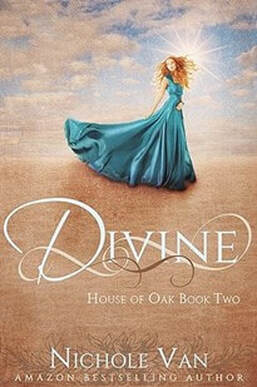 Finished 12/26/23 This is Book 2 from the House of Oak series. The best part of a series is meeting the characters you already loved. Emry and James were the lead characters in Book 1, and Georgiana had a supporting role. Her starring moment came when Emry had to take her back through the portal to save her life. In Book 2, Georgie takes the starring role. She’s cured, but she’s struggling to find her place in the 21st century. THEN the impossible happens . . . she receives a love letter from the past, and she wrote it! As a lover of mysteries, there’s only one thing she can do – time travel back to discover the love of her life, but there’s a twist . . . gooseberries! Watch whenever they’re mentioned – they’re the key to the plot. In 2013 Georgie’s boyfriend belongs to GLIB – Gooseberry Lovers International Brotherhood. Back in 1813 they figured into the plot too. Sebastian Carew enters the story when he becomes the Earl of Stratton. There’s only one small problem – if he isn’t married by his birthday, he will forfeit 60,000 pounds, and the money will go to 3 gooseberry societies. I’d never heard of gooseberries until I read this book and its back matter. If you’re curious what gooseberries look like, take a look under this paragraph. Gooseberry societies and competitions were a fad in the early 1800’s. If you were a gooseberry back then, you were a lax chaperone who wasn’t keeping an eye on your charge. Gooseberries are still popular in Britain, but now it means you’re the third wheel in a group. Amazon’s Description: Georgiana Knight--born in the nineteenth century, but now living in 2013--has certain standards when it comes to mysteries: they must involve blood curdling threats, late-night rendezvous and the terror of Imminent Danger. So far, her current mystery has been a terrible disappointment. No ghosts, no dastardly villains, not even an actual murder weapon. Just a suspicious symbol, a drawing of a bloody dagger, and an old love letter. Though the centuries-old love letter is written in her own handwriting, so that's something, right? And there is a time portal in her cellar. Should she risk giving up hot showers and return to the past to discover the mysterious stranger who inspired (will inspire?) her passionate letter? In 1813, Sebastian Carew has his own mystery to solve. As a teenager, he fell madly in love with his childhood friend, Georgiana. Ten years later, he returns from fighting abroad as an eligible man of fortune who must marry. And soon. He is determined to fend off fortune-hunting women, find Georgiana, and win her affections. However, she has utterly vanished. Can he divine the truth of her disappearance and convince her to marry him before time runs out? 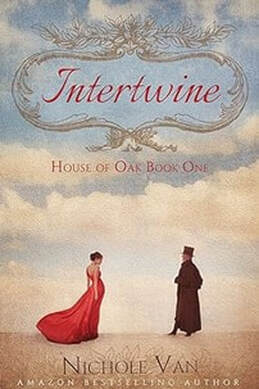 Finished 11/12/23 This was Nichole’s debut book from February of 2014. I found it in June, and I’ve been reading her work ever since. Intertwine is a time travel novel with Emry coming from 2012, and James from England, 200 years later. It’s a parallel story with the plot moving back and forth between the two characters. I love how she weaves them together. Nichole was an award-winning photographer before she started writing. I think it gave her an edge in picturing her characters and their story. She also uses Pinterest to store photos and notes to use later. I’d never heard of that before. I finished Nichole’s newest book before I started her first one again. I never noticed her growth as a writer until now. I loved her stories before, but her writing feels richer and deeper. I think it comes from the way she shows her characters’ emotions through their actions. She also uses historical details like furniture and clothing to help you picture the setting. Amazon’s Description: Outlander meets Bridgerton in a love story for the ages! Time is not a river. It is a vast cosmic sea. Where each life exists as rippling circles on its surface, past and future being eternally present. And occasionally, one expanding ring intertwines with that of another, weaving the lives of two people together. . . . In 2012, Emme Wilde can’t find the right guy. She wants to feel that swept-off-your-feet dizziness of true love. But so far, her dating life has come up short. Star Trek geek? Nice but too serious. Hippy artist? Cute but too vulnerable. Instead, Emme obsesses over the portrait of an unknown man in an old locket. Granted, a seriously dreamy guy with delicious, wind-swept hair she just itches to run her fingers through. But still. Dead men may be great listeners, but they are not exactly boyfriend material. Emme travels to England, determined to uncover his history and conquer the strong connection she feels. In 1812, James Knight has given up finding the right woman. All he wants is someone to share his love of adventure. Instead, his life has become a Shakespearean drama. His brother languishes in a tragic star-crossed romance. His beloved sister clings to life, slowly dying of consumption. But then he finds a beautiful mystery woman, dripping wet and half-dead, beneath a tree on his estate. Now if he can uncover her history, perhaps adventure—and romance—will find him at last. About a month ago Richard Welsh from Public Relations emailed and asked if I’d share a pair of links with you. I looked them up and said sure. They’re all about vetting a doctor if you live in Florida, but the advice applies anywhere. Here are the links Richard sent me, and what I thought about them. Picking a doctor is important, but it’s critical if you’re facing surgery. You want the best doctor doing your operation. An ounce of pre-op research is worth a pound of post-op complications. The 1st link: Vetting a doctor before surgery - fhvlegal.com/vetting-doctor-before-surgery/ The 2nd: A checklist to keep things simple - Vetting a Doctor Before Surgery Checklist  Part 1 – Research – This is the first, and most important step. That’s because research plays a part in all the other steps you take to find that doctor, who’s just right for you.  - Check their credentials. Search your state’s Department of Health for your doctor’s name and license status. Check to see if there are any errors or mistakes on their record, or if they’ve received any disciplinary action. Richard shared Florida’s Department of Health link, but your state should have one too.  - Check for board certification and professional associations. The American Board of Specialties has a button that lists all of them. Find the one you need, then your doctor’s name. You’ll see what he/she is certified in. The Florida site also has a list of associations. Use it as a guide to find the ones in your home state.  - Check reviews online or from people you know. Try websites like Healthgrades, Vitals, RateMDs, and local hospitals, and don’t forget to talk to the people you know. 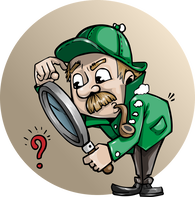 Part 2 – Ask Questions – Some questions will come from your research. Others will pop up as you move forward. Think about the things you want to know about the surgery and the doctor who’ll do it. If you’re worried, jot down your questions. The answers will make you feel better, or they’ll drive you to find more information. Maybe you’ll even seek a second opinion. Here are some suggestions from the Florida site that might help you find your way. 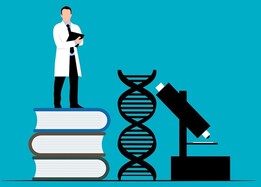 - Ask about experience – How often does your doctor operate per week? The more, the better. What’s their experience, positive and negative? (Ask your surgeon, their patients, even your friends and family doctor.)  - Ask about successes – How does your doctor define success, and what’s their success rate for your surgery? What kind of anesthesia will they use, and are there side effects? Where can I find testimonials/referrals for you as a surgeon, or from your patients?  - Ask about continuing education – What’s your doctor doing to stay current with new developments within their area of expertise? Are there alternative options, and what do they say about them?  - Ask about surgery, post-op, and recovery – What are the risks and side effects of surgery? What will it cost? How long will I need hospital care? What is the post-op plan? Will I need therapy? What will insurance cover, and what’s my cost? How long until I’m recovered and back to work/normal? These are all basic questions from the Florida website. They can help you find answers to your own unique situation.  Part 3 – Get Referrals – Ask people you know. They’ll help you in your search for the right doctor. How? Ask them to refer you to a specialist or to a procedure.  - Get referrals from your primary care doctor. That’s where I go to find a specialist. I trust my doctor and his/her suggestions. Doctors get feedback when the patient returns. If they’ve had a good experience, they’ll continue to send the specialist new patients. If it was a bad one, my doctor would have to decide if they’d recommend them again. I’ve been happy with all the specialists my primary care doctor recommended, except one. Practically perfect is a great record😊  - Get referrals from people you trust. Ask the people you know. Like family, friends, or acquaintances for their recommendations. I was lucky, I always found someone in the teachers’ lounge who’d experienced the new problems that appeared with age. I never asked someone I didn’t trust.  - Ask for another referral, or a second opinion. If something feels wrong, get another opinion. It will either confirm the information you already have, or it will confirm your suspicions. Sometimes you have to listen to your gut; then do the research to help you make a good decision.  Part 4 – Red Flags – Look for red flags when you vet a new doctor. When you have a bad feeling, listen and check it out. Maybe it’s your imagination, but maybe it isn’t. Do your due diligence. Then decide if you want to move forward, or search for a new doctor.  - Lacks board certification. If a doctor doesn’t have it, there’s a reason why. Either they lack the training and evaluation, or it’s been pulled because of malpractice. This is a HUGE Red Flag that you should find someone else.  Check credentials. Look at a physician’s experience. If you have a choice between someone who does 1-2 surgeries a week versus someone who does 50, who would you pick? My father chose the one in the 50-a-week club for his, and I’m glad he did. Don’t forget to check for malpractice claims, disciplinary actions, and for patterns of negligence. These are NO-GO signs. My advice – find another doctor.  - Examine everyday behaviors for flags. When you meet with the doctor, do they rush through the appointment, or fail to answer your questions? Do they dismiss your concerns without explanation, or refuse to consider other alternatives? You’re paying the doctor, and he serves you. If he doesn’t, look elsewhere. Look to see if the doctor’s office is clean and organized. If it’s not, it tells you something about the way they do business. Do what feels right for you – after all, you’re paying the bill. Finally does the doctor pressure you to make a decision, without getting a second opinion? My daughter had one of those doctors, so we checked with another one. He offered advice and monitored her for changes over the next several years. I’m glad we said thanks, but no thanks to the first one. 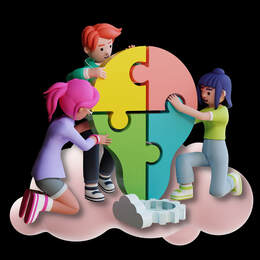 Part 5 – Final Thoughts & Conclusions – At the end of the process, vetting a doctor is like trying to fit the right puzzle pieces together. If you do it well, you have a match that fits you and your family. If you feel like you’re shoving a square peg into a round hole, you probably are. I’d take a fresh look at your research, plus a few new variables.  Double-check your insurance coverage. Healthcare is expensive, and insurance is the gate keeper. Make sure your choices are covered, or consider making a change. Otherwise, be prepared to pay a little, or A LOT More for your medical bills. Your financial health is another important part of this decision.  Trust your instincts/gut. If you have a bad feeling about a doctor and/or surgery, listen. Sometimes your gut is your first and strongest warning sign that danger lies ahead. Getting a second opinion can give you peace of mind. Mental health is part of your physical health too.  Make sure you’re comfortable with your decision. Knowing you can trust your doctor for information. That they don’t pooh-pooh your choices can give you peace of mind when your body is under stress. That’s a very good thing 😊  Don’t forget accessibility. If your surgeon is hours away, getting treatment and follow-up care can be tricky, and expensive. On the other hand, if your doctor makes you feel safe, like you’re in good hands, it might be worth driving a little farther to get that safety net. So in conclusion, take the time you need to make a good decision. Don’t forget the doctor serves you. You’re paying for their time and expertise. Make sure you’re getting what you paid for. Look familiar? This is the path a solar eclipse takes from start to finish. It was the same path the Great American Eclipse followed in 2017 and the Total Solar Eclipse did today (April 8, 2024). Now I'm putting them together in one new post. This is the link to the original post: http://www.rindabeach.com/blog/august-26th-2017 Part 1 - The Path to Totality The sun starts on the left side of this diagram. In the next 5 pictures, the moon moves across the sun until it reaches totality, or full eclipse, in the 7th picture. In the last 6 pictures, the sun and moon move back into their regular orbits. If you could view an eclipse from space, and could connect the dots, this is what it would look like. Find the white lines that touch the earth. If you were standing anywhere between them, you’d get to see part of the eclipse. But, if you were standing at the end of the black cone, you’d see the whole entire eclipse from start to finish, the entire totality. Lucky you! This is the Great American Eclipse’s map of totality. You can follow the 3 lines from Oregon to South Carolina. I was close in Lafollette, Tennessee, but we drove 90 minutes southwest to Sweetwater. It was our sweet spot, and totally worth the drive. This is the 2024 map of totality. Follow it from Mexico all the way to Canada. This time – no driving. I just walked out my backdoor to check how the eclipse was progressing in Wapak. I walked back inside to watch it cross North America, live on TV. Photo: NASA SVS | The 2024 Total Solar Eclipse This is part of the path, from Illinois to Ohio. If you find Lima in Northwest Ohio, scan down to Celina. The dot for Wapak should be beside the ‘a’ in Celina. Me too! Photo: NASA SVS | 2024 Path of Totality Want to know what time the eclipse starts? Google it! I found a chart that takes you from Oregon to South Carolina, but it didn’t have Sweetwater, so I googled again. In Sweetwater the eclipse started at 1:04. Totality at 2:32. We saw 2 minutes and 33 seconds of totality. Their site said so! If you want to know what time the 2024 eclipse started, take a look at this screenshot from astronomy.com. Of course, Wapak isn’t on the table. We didn’t even get a dot on the map of Ohio ☹ But don’t worry! Thanks to the local town fathers and mothers, I found the starting time, 1:54, and I was outside. Ready to go 😊 Totality was SO much longer this time. I got to stare at the sun without glasses, for almost 4 WHOLE minutes. I didn’t look away – I may not have another chance. At my age, who knows if I’ll be around in 2044 for the next big eclipse. Source: Home | Wapak Solar Eclipse Part 2 – To Totality and Back Again The first picture is totality. Did you know that one minute before totality, the sun starts giving you signs that it’s almost time? I didn’t. The second picture shows that first sign, shadow bands. The earth’s atmosphere refracts the last rays of the sun. Refracting bends the light, like with a rainbow. If you want to see shadow bands, look at something white or light colored. We watched a white truck in the parking lot. My husband spotted them first, of course! This time, I had no need for shadow bands. I wouldn’t have seen them in the grass anyway. Instead I enjoyed totality for 3 minutes and 56 seconds. That’s like 4 WHOLE minutes. Do you think the first picture looks like a diamond ring? Scientists did! It’s the 2nd sign, and it happens about 10-15 seconds before totality. The ring is the sun’s corona. The diamond is the last burst of sunlight. I think it looks like the 6th picture, right before totality. I don’t think I saw the first diamond ring in 2017. I tend to pull my glasses on and off and on again – so it’s easy to miss. It’s only up for 10 seconds. This time I KNOW I didn’t see it. ☹ When the diamond fades, the corona’s left. It’s the sun’s outer layer of atmosphere. The sun’s surface is 1.8 million degrees Fahrenheit, but the corona is 200-300 degrees hotter. Water boils and becomes steam at 180 degrees. Can you imagine how hot the sun is? YIKES!!! I didn’t write about the corona last time, so I probably didn’t see it. This time I was more interested in totality and my 4 precious minutes without glasses. Do you see the tiny beads of light in the 1st picture? The diagram calls them Baily’s Beads. They show up 5 seconds before totality. I missed them, but my husband saw them, of course. Baily’s Beads aren’t real beads. During an eclipse, the sunlight travels through the moon’s mountains and valleys. From earth the light looks like beads. I didn’t see Bailey’s Beads this time either. They’re only visible for 5 seconds before totality. So me missing them, totally makes sense. My husband didn’t say, but he’s an engineer, so he probably did see them. See the red ring again? It’s called the chromosphere, and it’s the middle layer of the sun’s atmosphere. You see it just a few seconds before totality. Then the other 2 layers of the sun’s atmosphere make it disappear once more. A few seconds – there’s no way I saw this. I would remember a red ring circling the dark of the moom. I’m glad there are pictures, so I can see what I missed 😊 After 90 minutes the moon made the sun disappear. It also made Sweetwater colder and darker. At 2:30 in the afternoon a few stars came out. Finally! Totality! It was incredible! The whole town cheered, including hundreds of visitors. Google Sweetwater, and you can see and hear us. We also took off the special eclipse glasses. Totality is the only time you can look at an eclipse without them. Before, and after totality, we wore them. Outside the totality zone, you didn’t see stars in the middle of the day, and you couldn’t take off the glasses, at all. I’m glad we made the drive. Totally! TOTALITY again! Four Whole Minutes of IT! The moon covered the sun that whole time. It’s something I’ll never forget. Totality started at 3:09PM, but I didn’t check my watch. I spent my four precious minutes looking up at the sun and the moon. The sky was dark, like the sun was about to set, and it was a lot darker than 2017. I counted three stars. That’s it. And the temperature, it slowly got colder all afternoon, from 1:54 on. It was exactly the way I imagined a total eclipse would be. When Totality started, there was no big cheer, but we live just outside town. Instead, fireworks popped every minute or two until it ended. I was surprised anyone bothered – Totality only lasts a few minutes. I didn’t notice the animals in 2017. This time the birds were out in the yard, flying and landing, chirping and cawing like they usually do. But they grew quiet as we approached Totality. Then, they disappeared. With totality over, the stars disappeared, and the signs reappeared, but in reverse order. First Bailey’s Beads, then the Diamond Ring, the Corona, and finally the Shadow Bands. This is the return from Totality to the partial eclipse, except the order’s reversed. This time I saw the first 3 signs, but not the Shadow Bands. In 2017, I saw all 4. 😊 When the 1st Diamond Ring appeared, we were on the 6th picture of the diagram. Within 4-5 minutes of time, we were on the 2nd Diamond Ring and the 7th picture. My family stayed to watch for a few more minutes as the moon kept moving away from the sun. Then we left. I’m glad we did! The roads back to the Lafollette were packed, even when we got off interstate and onto back roads. When totality was over, it seemed like everyone in Tennessee was leaving Sweetwater. Looking back at the Great American Eclipse, just 10 days ago, I am so glad we drove to totality, and that I can share it with you. If you weren’t in the zone this time, you’ll have another chance, in only 7 years. Mark your calendar! The next one is coming to a state near you on April 8, 2024. Be there or be square! The best part – no driving this time! When Totality finished, I walked back inside the house and over to the TV. Would you believe the sun and moon were over Maine and New York? It’s amazing how fast they traveled, and how much of the country they could shine down on. Totality ended at 3:13PM in Ohio, but I went in and out of the house so I could watch. Outside the sun and moon slid apart! The moon disappeared into the darkness, and the sun kept on shining. The time – 4:25 in the afternoon. The great eclipse was over 😊 ☹ As for the temperature, it slowly warmed up, but it never got warm, like it was at the beginning. Still, it was the right temperature for an April afternoon at 4:25PM. The Total Solar Eclipse was a week ago. If you missed it, I’m so sorry. The next one is in 20 years – August 23, 2044. I hope we’re both around. I”ll be 85. WHOAH! BUT, if you’re willing to brave the crowds and pay for airfare, you only have to wait 2 years. The date – August 12, 2026. Your destination – Greenland, Iceland, or Spain. I want to go. Now, to convince my husband 😊  Source: https://www.timeanddate.com/eclipse/total-solar-eclipse.html My biggest source for this post is this link. My husband found it and printed out a packet. Without this source, we would have missed things like shadow bands. Thanks to the folks at timeanddate.com for teaching the teacher, and the engineer! Do you recognize this landform? It’s the continent of Antarctica. It’s the only continent without a single country, although 22 have a ‘consultative’ status. That’s because they agreed to a 1959 treaty. They promised to keep Antarctica as a scientific preserve, like a national park. It was to be preserved as a place of scientific study and environmental protection. One of my critique partners, Sandra Martin Denis just got back from Antarctica. She was there during the summer, the warmest time of year. It’s funny – Antarctica’s summer is during our winter. Part 1: It came straight from Sandra’s trip – her photos and her words. Enjoy! Penguins live in Antarctica. Penguins live in colonies. They're great swimmers. They spend half their time in the water and half their time on land. They are expert divers. They eat krill, fish, and squid. Penguins mate for life. They build nests of stones. Most penguins lay two eggs in a clutch. The male and the female take turns incubating the eggs, except for the emperor penguin. They build "highways" on the snow. Their main enemy is the Leopard Seal. Sandra didn’t have a picture of one, but I found these two on Pixabay. Yikes! Look at those teeth. OUCH! Part 2: A trivia question about Antarctica’s climate. What is the average temperature range for Antarctica per year? 10°C to -60°C 10°C to -10°C 30°C to 20°C -5°C to -10°Celsius 50°F to -76°F 50°F to 14°F 86°F to 68°F 23°F to 14°Fahrenheit Take a guess, then check below the map. I completely missed this one. Antarctica is warmer than I thought! The annual temperature for the whole continent ranges from about −10°C on the coast to −60°Celsius. In Fahrenheit that’s 50°F to -76°F. Wow, 50 is way warmer than I imagined. That’s like a warm March day in Ohio! But it all depends on – location, location, location.  That 50°F was near the coast, in the summer. That’s where Sandra was, but she said she wore a parka. Maybe at night when the sun goes down, the coastal temperature drops too. In the winter – that coastal temperature gets even colder, -40, and that’s the reading on both Celsius and Fahrenheit thermometers. That surprised me. I’ve never seen the two temperature scales match, with the same exact number. Incredible! I’m glad Sandra didn’t go inland, especially to the mountaintops. Their warmest temperature – -22. That’s one of the worst winter days in Ohio, ever. I don’t want to think how cold it gets in their winter. Ready? That’s -112?! Holy frostbite, that’s cold! And the coldest temperature ever recorded on earth? -128.56, at the Vostok station in Antarctica. That’s where scientists live. And the date – July 21, 1983. YIKES! Part 3: Wind Speed and Snowfall by the Numbers  Those temperatures, like -112 F are without the windchill. To find that, I looked up the wind speed on the antarctica.gov link below. I don’t want to do the math, but if you can imagine, an Antarctic wind can blow at 100 km/h, and it can blow for days! I don’t do kilometers, so in miles per hour – that’s 62. If you want to imagine it, stand beside a highway. That’s how fast cars will drive by. I’m feeling colder already! Are you ready for the strongest winds? That’s 200 km/h or 124 mph, or the wind speed of a Category 3 hurricane. YIKES – x 2! ☹ As for snow – the average accumulation for the whole continent of Antarctica is 150 mm of water per year, or 5.9 inches. If you’re not sure what that looks like, find 6 on a ruler. When you go inland to the elevated plateau, the annual value drops to 50 mm. That’s only 1.96 inches. But at the coast, it rises to 200 mm or 7.87 inches. But for the heaviest rain or snow, find the peninsula in the northwestern corner of the map. It stretches to the north, and the Bellingshausen Sea is below it, to the south. It’s not labeled, but it gets over 1000 mm of water. In inches that’s 39.37. Think yardstick, then add your index finger for another 3 inches. That’s a lot of water!  Sources: For more information: www.antarctica.gov.au My source: What is the average annual... | Trivia Answers | QuizzClub Map: By Robert Simmon - en:Internet Archive - https://web.archive.org/web/20070823123915/http://earthobservatory.nasa.gov/Newsroom/NewImages/images.php3?img_id=17838 (originally http://earthobservatory.nasa.gov/Newsroom/NewImages/images.php3?img_id=17838 NASA Earth Observatory), Public Domain, https://commons.wikimedia.org/w/index.php?curid=3126858 I wrote the original post back in November, and I shared the update on my vlog. At the end, I predicted where I would be at the end of February. Today is March 13, and here’s where I am on my journey to tell the story of the men who signed the Declaration of Independence. Part 1 – Where I Was: I believe you need to know where you were, to take stock of where you are. It also allows you to see progress, and that’s a good thing. The original post went live on November 20. I was on Chapter 17, and I was writing about Ben Franklin. Oh My Goodness! I remember that chapter – not in a good way! It took me 3 weeks to find my way in. If you’d like to read the original post, here’s my link: http://www.rindabeach.com/blog/me-and-my-middle-grade-novel-where-am-i-now My vlog went live on January 28. I finished Chapter 21 with Francis Hopkinson that week. If you’d like to listen, here’s the link: https://www.facebook.com/watch/?v=2796790403792630 Part 2 – Where Am I Now? This week I finished Chapter 30. Only 27 chapters to go 😊 And the signer – Carter Braxton from Virginia. I’d never heard of him, but now I won’t forget him either. His mother died after she’d given birth to two baby boys. He was her second son. Carter married young like his father, and his wife died after she’d given birth to two baby girls. Heartbreaking. But he married again. She gave birth to ten boys and six more girls. Eighteen – that’s a lot of children! Milestones from my Journey : Chapter 19 = a third of the way to the end. Chapters 28 = halfway done. I celebrated both milestones with a tiny bit of shopping. It makes a memory and keeps me moving. Chapter 38 = two thirds of the way to the end. That’s seven chapters or seven weeks from now, I hope. Story Stats – 29 founders, dead Two states with all its signers dead – North Carolina (3) and New Jersey (5) The state with only one death – Massachusetts. The signer, John Hancock Part 3 –My Conclusions and How They're Working: Back on July 17 of 2023, I wrote a post about failing. I even thought about quitting. Back then I was struggling with Stephen Hopkins from Chapter 12. Here are my conclusions after a week of struggle, plus the answer to the postscript – how my conclusions are working.  1. It’s OK to fail. Sometimes you need to stop and make a new plan. The last time I failed/got stuck was on Chapter 17 with Ben Franklin. 2. Change when you need to. When I get stuck, I should take a break. I need fun and family too. I still take breaks when I need to. But after Chapter 17, I found a new technique. I haven’t missed a deadline since then 😊 3. When I get stuck, I should step back. Later I’ll see how to edit and revise. I don’t need to step back with my new strategy. At least so far 😊 4. Each chapter feels like I’m climbing some steep hills. I need to write at this story’s speed. Sometimes that’s fast, and the story just flows. Other times it’s slow or no-speed at all. That’s when my ideas need time to develop. I still feel like I’m climbing steep hills, especially at the beginning, but my new technique makes it easier to climb that first one. Then the story usually flows along. Sometimes I find a steep hill near the end, but the strategy works there too 😊 Post Link: http://www.rindabeach.com/blog/when-you-feel-like-quitting-inspiring-quotes-for-you-and-me Vlog: https://www.facebook.com/watch/?v=6554628911271624 Part 4 – Three New Strategies: How did I find them? The old-fashioned way – trial and error – until I find what works. For today. When they stop working – I go back to my drawing board.  1. Finding my way through research – I’m much faster than I used to be. I look for three internet sources for each signer, then what was going on just before his death, and finally what Charley and his family were up to. Sometimes I find my way into the chapter from it, but a lot of times, I don’t.  2. I write less – but not on the chapter of the week. I still write all day, taking breaks when I need to get up, until about 8PM. Sometimes just getting up and moving around will get me unstuck. And, so far I’m staying on track, writing a chapter a week. The less, that’s on my blog. I realized over the summer, when I thought about quitting, something had to give, and it couldn’t be me. So, now I write a blog section in two days. The first day I put up pictures and outline what I want to write. The second day I write and revise that section. If life gets in the way, and occasionally it does, I give myself a day of grace. Less is also on my vlog. I’m doing more classic posts. LOL, it’s just another way of saying an old one. I also look for blogs, beyond the original one, but they need to add to the vlog’s topic. 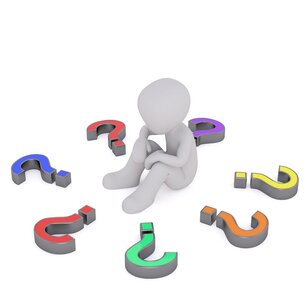 3. This is the BIG ONE! I write questions to Charley (Charles Carroll), and I answer them. After spending the last year and a half with him, I know him pretty well. This week I’m working on Oliver Wolcott. I’d never heard of him either. He was the governor of Connecticut in 1797, and a Major General in the Continental Army. He was one of the heroes of Saratoga, one of the first big wins for Washington’s army, but – that didn’t help me figure out how to write Chapter 31. What did? Questions! I started with ‘Where is Charley?’ and ‘What is he doing?’ Sometimes that works. Sometimes I have to ask more questions. I knew Oliver died on December 1, and Charley would have been in the Maryland Senate. So I asked what he might have been doing. That was a dead end, but it’s part of the process. Then I asked the question, and I hit pay dirt! I asked what Charley was doing at Christmas time. I got the answer the next morning. I realized I’d already written something about a priest visiting him. I don’t know if one really did, but it fits my research. Charley’s cousin was the first Catholic bishop in the US, and he started St. Mary's College and Seminary in Baltimore. The priest had to visit, because there were no Catholic Churches in Annapolis. Not yet. The first one was built next door to Charley’s house. BINGO! I started writing, and I finished the WHOLE rough draft in one day. I even started my first round of revision. I didn’t finish – I needed to write this part of the blog for you. If I hadn’t found my way into the chapter – I would have asked Charley more questions, until I found it. I know when I have a good answer, because I can keep writing. Even when I question the last paragraph I wrote. When that happens, I take a break, AND I can push past it. Part 5 – My New Middle Grade Goals:  The next one – to finish Chapter 36 by May 3rd. That’s the first Friday in May. My critique group is taking Good Friday off. Then I'll return to my usual pace – a chapter a week – to research, write and revise. It’s the fastest I’ve ever written, and the most I’ve written in years. I have another goal that’s on the back burner. I’m moving as quickly as I can, but the other chapters come first. My second goal is to polish the first 3 chapters until they’re submission ready. It’s a work in progress.  Spring is coming, and so is Kindergarten screening. It’s still a few months away. If you want to do a little prepping, here are five ideas for you and your child. They came from the UK. I modified them to fit American parents and kids. Link: The 5 Skills You Should Actually Teach Your Child Before They Start School (msn.com) #1. Talking: In the US, I’d expand this into the language arts. 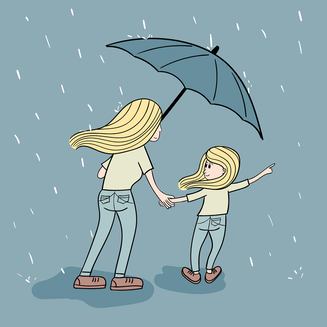 - Think speaking. Talk to your kids, ask them questions, sing and do nursery rhymes. - Think listening. Can your kids listen to a story or follow directions? Maybe with one step or two? Maybe more! (2 step example – jump twice, then stop.) - Think reading. Read a book with your kids. Picture or Board book, it doesn’t matter. Let your kids read to you. It doesn’t have to match the real text. That’s how littles start reading – by retelling a favorite story. You can do the same thing with television. Watch, then talk about it. You’re still using all of those great skills. - Think writing. It can be as simple as drawing a picture or writing their name. That’s how littles start. They’ll let you know if/when they’re ready for more. PS – Save a drawing from time to time, maybe once a month. They’ll show how your child’s fine motor skills are growing and developing. #2. Independence: This is the same set of skills whether you live in the UK or the US. The more independent your child is, the more successful they’ll be.  - Think separating. Can you leave your child and know they’ll be fine? During screening another educator will take your child to assess their strengths and weaknesses. They can’t get an accurate picture if you’re there. The school will set up classrooms that fit your child and their classmates based on that screening. - Think bathroom skills. Kids are expected to go by themselves. They need to wipe, wash, and dry their hands. Knowing how to get a paper towel is helpful. I remember watching Kindergarten teachers and students that first week. There’s a lot of life skills being learned and practiced. - Think lunch. Can your child eat by themselves? Open packages of ketchup or use a spork to spread butter. An adult’s around to help, but the more your child can do, the better. That first week of school your child will learn to carry their tray to the table. Afterwards they’ll drop off trash or things to wash. Every day that first week I gave thanks for kindergarten teachers. By the third week, those kids looked like pros! - Think clothing. Can your child put on a coat? Zip or button it? Can they tie their shoes, or pack their bookbag to go home? Teaching them how to get dressed is a good thing! So is independence. #3. Numbers: It’s more than 2 + 2, even in kindergarten. It’s not algebra or geometry, but the foundations for math begin in kindergarten.  - Think number sense. Can your child count to 10? To 20? If that’s simple, keep going. Maybe your kiddo can make it to 100! Do they know that 2 cookies are less than 4? Could they figure out if you have 4 cookies and give 2 away, how many are left? You could try this at your kitchen table or at the store. Any time you use math, let your child use it with you. - Think geometry with shapes. Can your child recognize triangles, circles, and other 2D shapes? Can they recognize 3D ones like spheres, cylinders, and cones? When you find those shapes in real life, talk to your child. - Think patterns, basic AB ones. You can build from there. You might start with circle, square, circle. Then ask what comes next. If your little doesn’t know, it’s an opportunity to learn something new. If you see patterns around the house, around the store, ask your child to look for them. - Think measurement. Start with more/less, heavier/lighter, and go from there. Talk about units at the grocery store – pounds, gallons, etc. Let them use a scale, like the one in the bathroom. The UK post said to bake with your child and let them do the measuring. If there’s a spill, they can learn to clean it up too 😊 #4. Concentration: It’s more than focusing and finishing a task. It’s also about changing gears. It’s about learning how to do things when your teacher tells you.  - Think listening to directions, then following them. Play a game with your child, or ask them to help you. They’re using those same skills. - Think movement. You can’t just get up and move around. You listen to your teacher. Try a game like Simon Says with your kiddo. - Think bathroom. You listen to your teacher too. Think of car rides. Your child has used this skill. - Think stopping and starting when your teacher tells you to. Sometimes you don’t get to finish what you’re doing. Watch how your child handles this at home and help them shift those gears. - Think about the other kids in the class who are doing activities too. If your child is in preschool or any other kind of class, take a look at how they’re handling those interactions. - The original post suggested things like sticker books, puzzles, activity books, and coloring. Don’t forget group activities like story hour for your child. #5. Play: This is the heart of childhood. Kids learn by playing – from finding their fingers and toes to stacking blocks.  - Think open-ended play where your child directs the action, with real things or with their imagination. - Think materials – like paper towel tubes, clay, and boxes. Or toys like blocks, costumes, and balls. The opportunities are endless, and so is the fun. 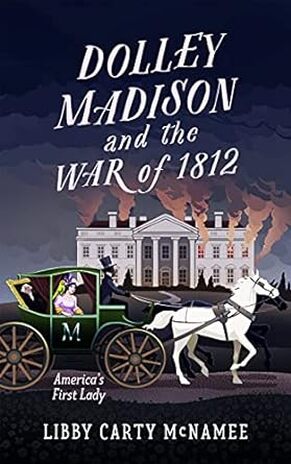 2/15/24 I was looking for another mentor book for my middle grade novel. This one skips me ahead to 1809, and to a lot of surprises. Here are the six that caught my attention. 1. Some things haven’t changed – the fighting between the two political parties. Back then it was the federalists and the antifederalists. Thomas Jefferson and James Madison were happy to serve as the 3rd and 4th presidents, but they were also glad to leave Washington and their federalist critics behind. 2. Washington City in 1809 was a mess. It was more backwater swamp than a capital city. It had sidewalks, but if you took the wrong step, you’d have muddy shoes. The president’s house was a shell without furniture, so Dolley invited a few key federalists inside and wrangled $5000 out of them. It was enough to decorate the public rooms. 3. Dolley used those rooms to bring people together from both parties, from different social classes. She thought mixing people together would help them to talk, and to work together. Her gatherings were so popular they were called squeezes. Can you guess why?! 4. The war went badly for the Americans who didn’t even have a standing army. The antifederalist Jefferson got rid of it. The redcoats took advantage and burned down the capital. Madison told Dolley what to save, like the Constitution and the Declaration, but not her dresses or turbans. They both wanted our most important documents in American hands. But Dolley saved one thing that wasn’t on the list, Washington’s portrait. She didn’t carry it out – she had it chopped out of its frame and stored away. They didn’t roll it up either– that would have cracked the paint and ruined it. 5. The war finally ended when Andrew Jackson overwhelmingly beat the British in New Orleans. The redcoats called his men dirty shirts, scum of the earth, and mismatched misfits. The battle ended in 30 minutes, with only 500 redcoats left. They started with 3000. I’m glad those mismatched misfits took care of business and saved our country. 6. After the burning of Washington, Congress made a few attempts to move our capital. Thank goodness they failed. I’m glad our capital is still named after the Father of our Country. Amazon’s Description: DOLLEY MADISON UNITES YOUNG AMERICA! Amidst the nonstop turmoil of the War of 1812, the decisive First Lady takes action and inspires an anxious nation. Dolley Madison faces a bitterly divided Washington City when her husband, James Madison, becomes our fourth president. The prospect of war against Great Britain threatens to tear our fragile republic apart. The "Presidentess" hosts open parties in the new President's House to unite political foes and cultivate an American identity. When President Madison declares war with disastrous results, Dolley carries on, ignoring the threats against her. However, as British soldiers march toward Washington City, she becomes their target. Now America's Second War of Independence hinges on her. What must she do to save the United States while also saving herself? The true story of a woman with humble Quaker roots who rallies America during the War of 1812! 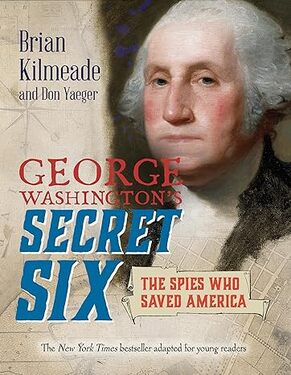 1/17/24 I’d never heard of the Culper Spy Ring until a writing friend said to check out the TV series “Turn.” I couldn’t, I don’t have that network, and I refused to buy it. Instead, I bought this book by Brian Kilmeade and Don Yaeger. It’s a nonfiction middle grade, not a thriller. But I was fascinated by the idea that George Washington would have actually set up a spy ring, and that he was once a spy himself. The details are fascinating! Here are the four I remembered. 1. Nathan Hale probably never said, “I regret I have but one life to give to my country.” Poor Hale, he was young and in love with the idea of being a spy. He went into New York a week or two after school started, too late. His cover – he was a schoolmaster. He was caught and hanged within a week or two. Hale could be linked to the quote, but there’s no proof he really said it. If there was, it would be in this book . . . it’s nonfiction. 2. There are paintings throughout this book. They give you a picture of what life might have looked like during the Revolution. Unfortunately, most were painted years later. That’s when small details get lost. One of the first examples is John Trumbull’s famous painting of the Declaration of Independence. Some people think it’s the actual signing, but it’s really the Committee of Five presenting their draft to the Second Continental Congress. You’ll find lots of other examples in this book. 3. Agent 355 – She was a real spy, but no one knows her true identity. Fascinating! In this book, the authors speculate that she ran in high circles with people like British Major John Andre. After he was captured with the plans from West Point from Benedict Arnold, Agent 355 disappeared. Some people think she was caught and imprisoned on one of the British prison ships sitting in New York harbor. No one knows if she lived or died. If you’d like to read what the Smithsonian thinks, click on this link: Who Was Agent 355? | History| Smithsonian Magazine 4. General Washington never recaptured New York, but the spy ring continued to operate all through the war. Even when the British took the war south to Georgia and the Carolinas. I was surprised to learn Washington gave the British fake information that he was nearby, with 2000 men. In reality, he left them there as a decoy. Most of the Continental Army was on a fast march south to Virginia. The cover helped them surprise the British at Yorktown, and that led to the end of the war. Amazon’s Description: A page-turning middle-grade adaptation of the New York Times bestseller about George Washington's top-secret spy ring that helped defeat the British. The American Revolution is well under way in 1776, but things are looking bleak for General George Washington and his Continental Army. With Washington's hasty retreat from New York City in August, many think the war might soon be over. After all: how on earth is this ragtag group going to defeat its enemy, the well-trained and well-funded military of the largest empire in history? But Washington soon realizes he can't win with military might. Instead, he must outsmart the British, so he creates a sophisticated intelligence network: the top-secret Culper Spy Ring. Drawing on extensive research, Brian Kilmeade and Don Yaeger tell the fascinating stories of these long unrecognized spies: a reserved merchant, a tavern keeper, a brash young longshoreman, a curmudgeonly Long Island bachelor, a coffeehouse owner, and a mysterious woman. This vivid and accessible young readers adaptation of the New York Times bestseller features an exclusive new introduction, extensive back matter, and eye-catching art throughout. Chronicling a crucial moment in American history, this historical thriller will excite and inspire the next generation of patriots. 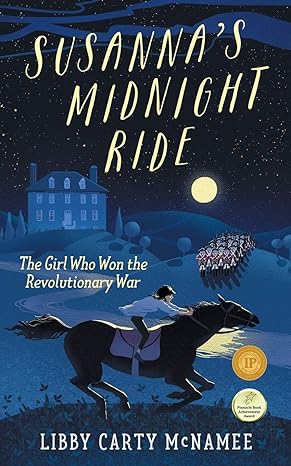 11/28/23 I’ve been reading my Charley book, the adult history one since last summer, but my critique partners suggested I need to read some children’s books from the Revolutionary period. I always take their advice, especially when it makes good sense. Susanna’s first line caught my eye – Tomorrow I’ll find out if my brothers are dead. Talk about starting with tension! My writing friends suggested pushing up the tension in a few key places in my manuscript. It keeps kids reading! This book also gave me another view of colonial culture and revolutionary heroes. I got to meet Benedict Arnold, General Cornwallis, and the only hero – Lafayette in its pages. The best part about reading this middle grade novel – it’s a true story that’s fictionalized, like the book I’m writing. And like my story, it’s based on research, of the characters and the time period. It’s a great mentor text! 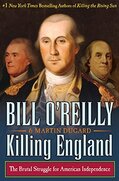 BTW – there is a prequel to this story that’s in the book Killing England . . . In January of 1781 Richmond was burned. The government escaped to Charlottesville so the British reset their target and took another swipe at it, and at 4 signers – Thomas Jefferson, Thomas Nelson, Benjamin Harrison, and Richard Henry Lee. They all escaped, thanks to Jack Jouett who did a little eavesdropping. Then he took the ride of his life. Just like Susanna, Jack’s face was scratched up by the ride. His was so bad he had scars for the rest of his life. If you’d like to read a bit more of what I wrote from the Killing England, click on this link and scan down until you see the cover: http://www.rindabeach.com/blog/the-books-i-read-for-research 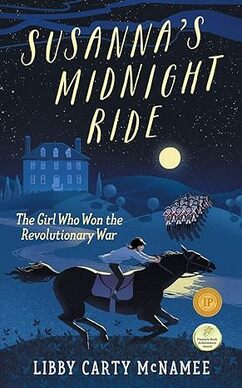 Amazon’s Description: #1 IN JUVENILE FICTION, 2020 INDEPENDENT PUBLISHER BOOK AWARDS ("IPPY AWARDS"); #1 IN JUVENILE FICTION, 2020 PINNACLE BOOK AWARDS; FINALIST IN FICTION: HISTORICAL, 2020BEST BOOK AWARDS. As the former Colonies struggle for freedom, the American Revolution is in the hands of a brave and resourceful teenage girl. At sixteen, Susanna Bolling is like America in rebellion; she craves independence. While her brothers are off fighting for the Patriots, she longs to do more than tedious household chores and attend spinning bees in sleepy City Point, Virginia. When British General Cornwallis invades her family’s Bollingbrook Plantation, she overhears his secret plan to defeat the Patriots. Much to her shock, she finds herself at the center of the war. Now America’s fight for liberty hinges on her. But can she overcome her mother’s objections, face her own fears, and outwit the famed General and his entire Army? Based on the TRUE story of revolutionary courage and conviction that’s sure to captivate readers of all ages. Part 1 – Do you know how these two books are related? Make Way For Ducklings won the Caldecott Medal back in 1941. It’s the story of Mrs. Mallard’s search for a home for her eight little ducklings. Where does she find it? At the Boston Public Gardens. Be Strong is a brand-new book. I thought it came out in December 2023, but I was wrong. I forgot I got it early because I was part of the author's crowdfunding project. But don't worry! It's out now, since March 5. Be Strong is the story of Nancy Schön, of how she created statues of Mrs. Mallard and all her little ducklings. Then she did what the book did – she took them home to the Boston Public Gardens If you’d like to check out my book review for Be Strong, here’s the link: http://www.rindabeach.com/my-reads/be-strong-the-rise-of-beloved-public-art-sculptor-nancy-scho If you can’t make it to Boston, take a look at this photo. Mrs. Mallard is leading her ducklings across the garden. And the best part about public art, you can interact with it. Take a picture with a duckling, or give each one a hug. It doesn’t matter. This is public art, so you’re allowed 😊 Part 2 – Have you ever seen public art in person, or taken a photo beside it? I have! Do you recognize the first statue? It’s public art from the Bremen Town Musicians, and you’ll find the statue in Bremen, Germany. When I was there in 2008, I had my picture taken beside it. So did everyone around me. The second statue is at the Armstrong Air and Space Museum in Wapakoneta, Ohio. Do you recognize this piece of public art? It’s a young Neil Armstrong holding his favorite thing – an airplane. He’s a hero in Wapak and beyond. Why? He was the first man to set foot on the moon. I haven’t had my photo taken with him yet, but I’ve seen lots of people take advantage of this photo op. I found these three pieces of public art on Pixabay. My grandkids would love the first and last statue. They look like the ones they play with at their favorite zoo. Then it’s time for a photo. They LOVE public art! I didn’t recognize the pair in the middle. I went back to Pixabay to find their names, Dogman and Rabbitgirl. Who knew? Google did! I looked them up, and they’re actually famous pieces of public art scupted by Gillie and Marc. Who knew? They’re stories for modern times, and you can find them in places like New York City or London. If you’d like to look for yourself, or buy a piece of art, here’s the link for Gillie and Marc: I Am (Rabbit) Woman – Gillie and Marc® Part 3 – Where in the world can you find Nancy Schön’s public art? Since 1987 Nancy has created 26 statues. You’ll find 18 of them in Massachusetts. Six are in other states in the continental US, and two are outside the country. Can you find the six states on the map where you’ll find Nancy’s statues? Look for: Tennessee, Florida, Ohio, Arkansas, Maine, and Oklahoma. If you live in Massachusetts or in any of the other six states, click below on Nancy’s link, and you can look up the name of the statue, city, and the state it’s in. If you go for a visit, I hope you make time for a photo op. Link: Nancy Schön - Wikipedia And the two that are outside the United States, they’re in Israel and Russia. Can you find them on this map? If you happen to find yourself in Moscow, Russia or Tel Aviv, Israel, I hope you have time for a photo op too. You’ll find the name of both statues on the link above.  |
AuthorWhen I write, I can only have one voice in my head, mine. A little noise is fine. But too much, or worse yet, WORDS, and I must change rooms or pull out headphones. Then I can write on! Categories
All
|











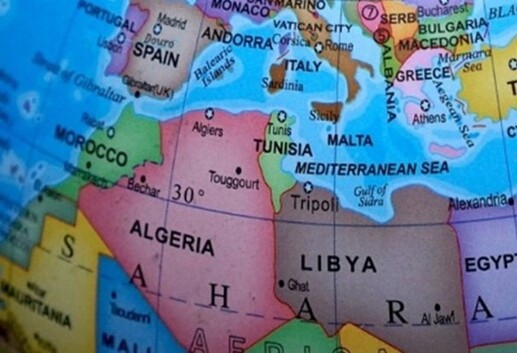







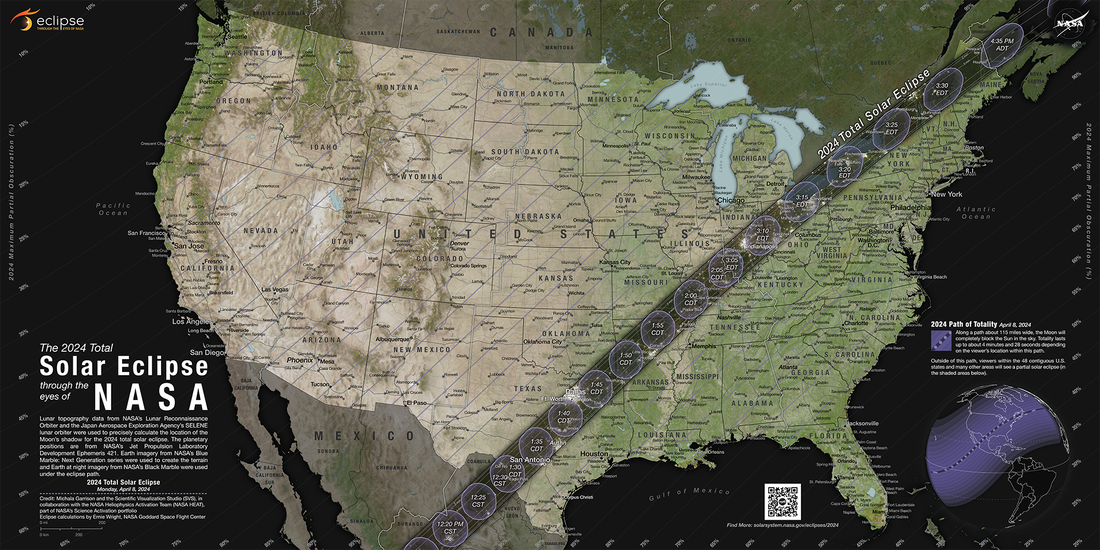

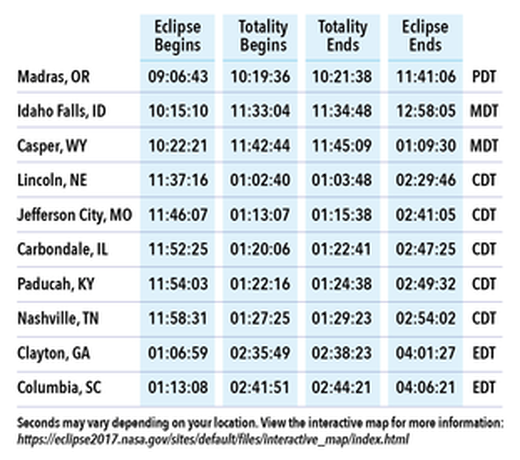
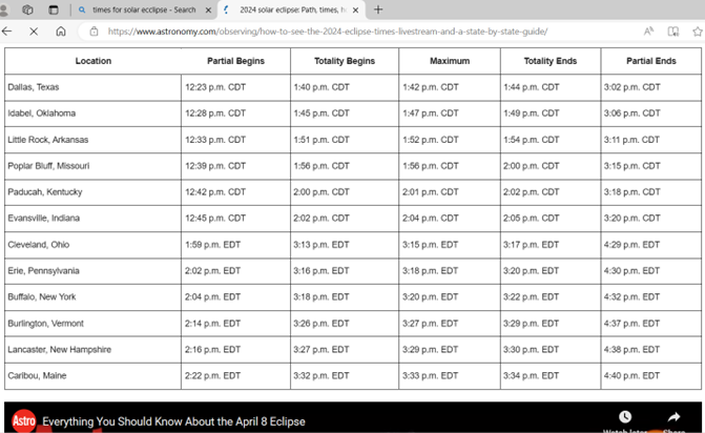
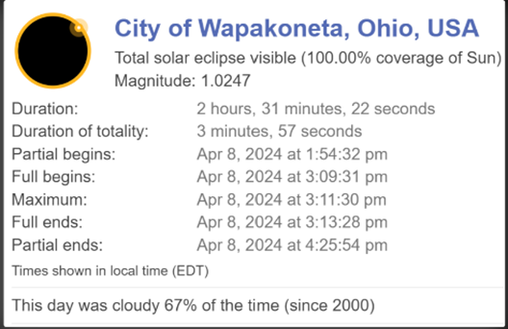










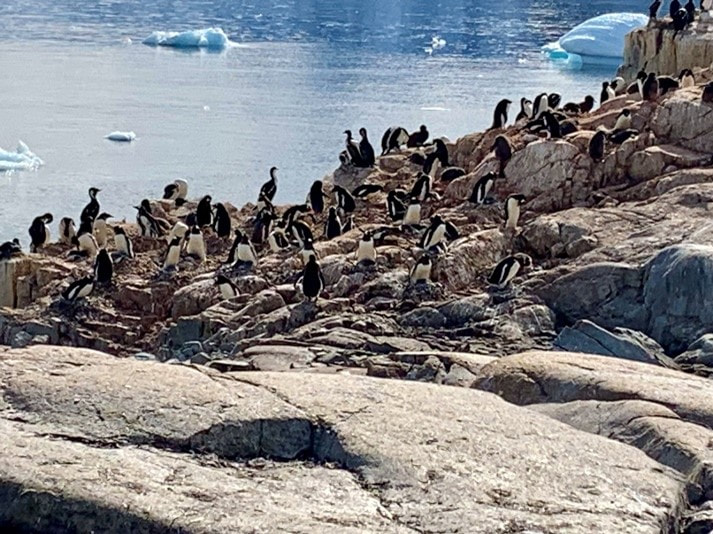





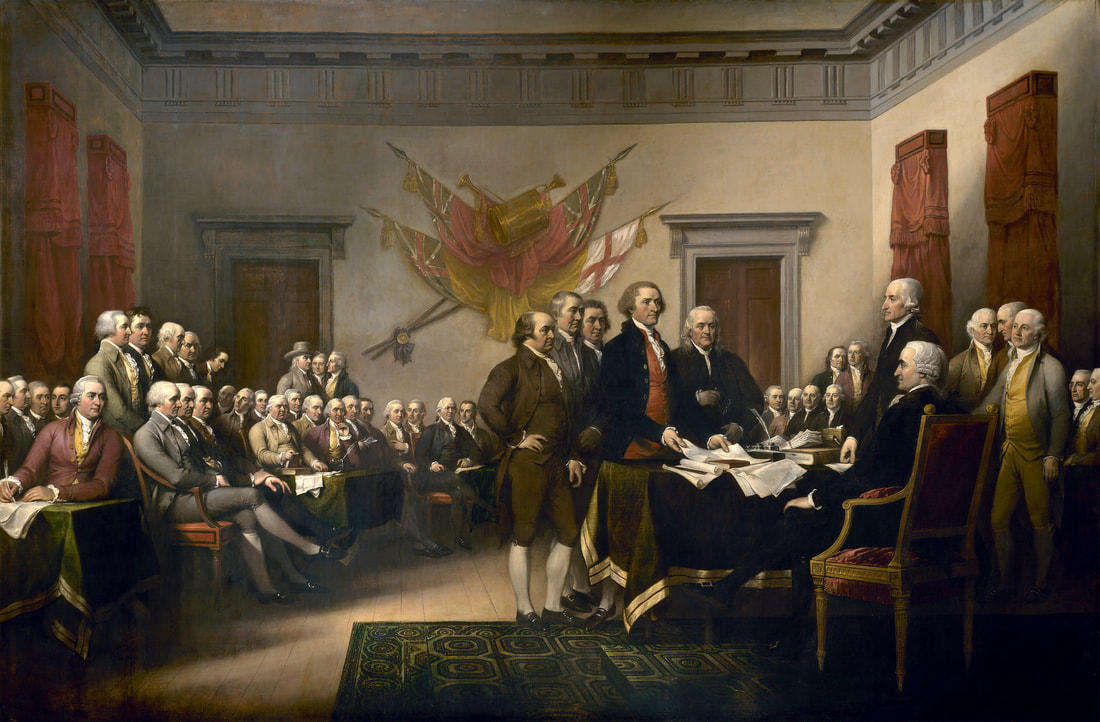

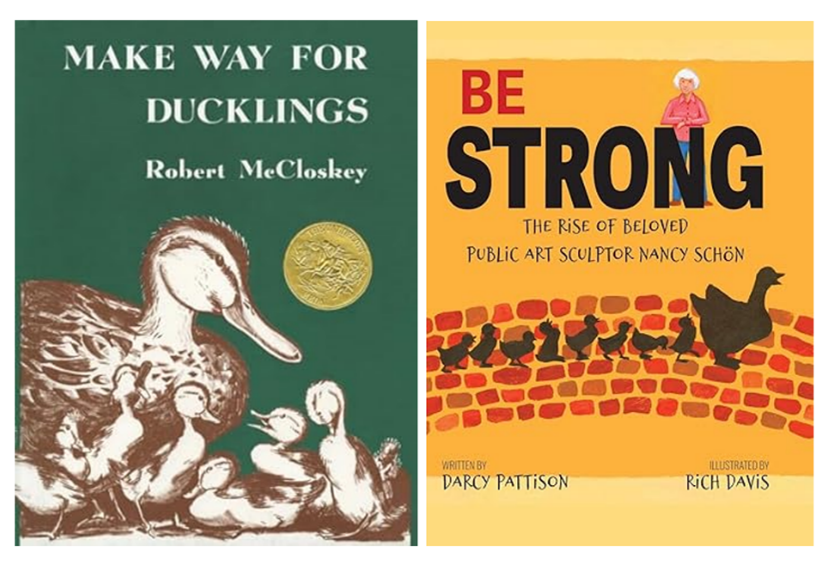
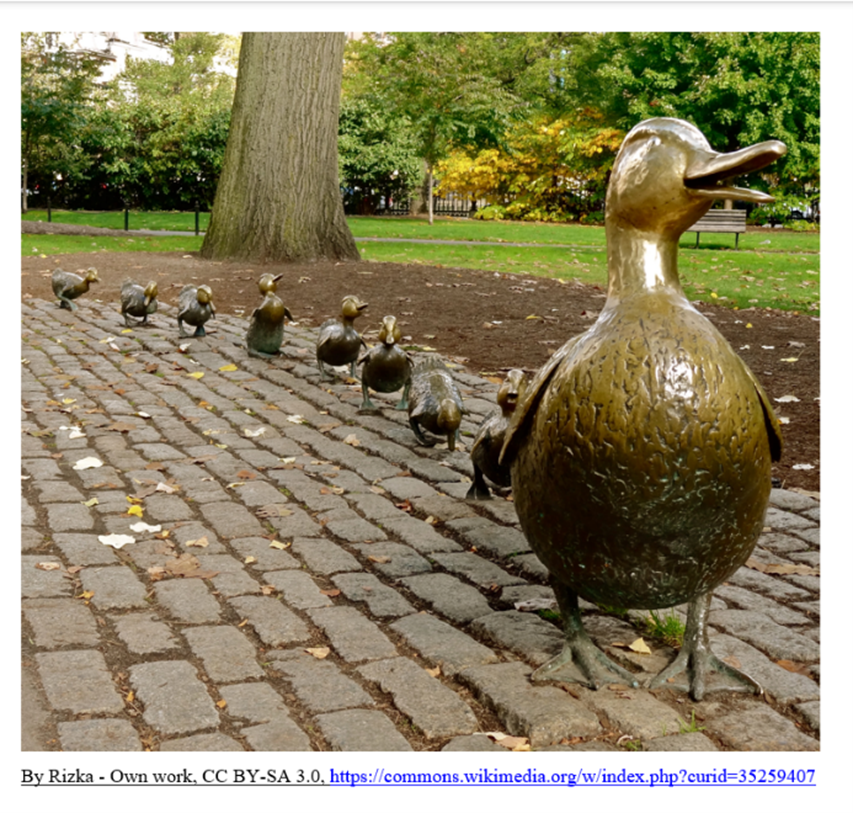
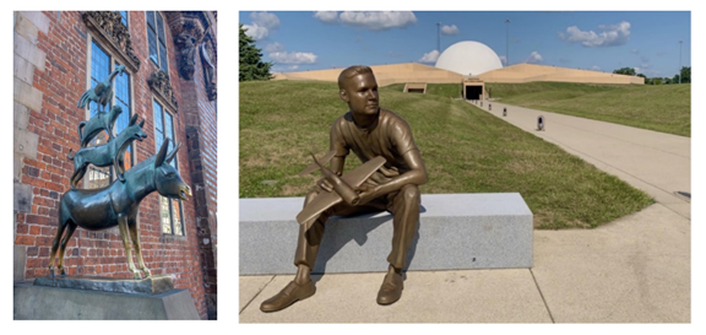

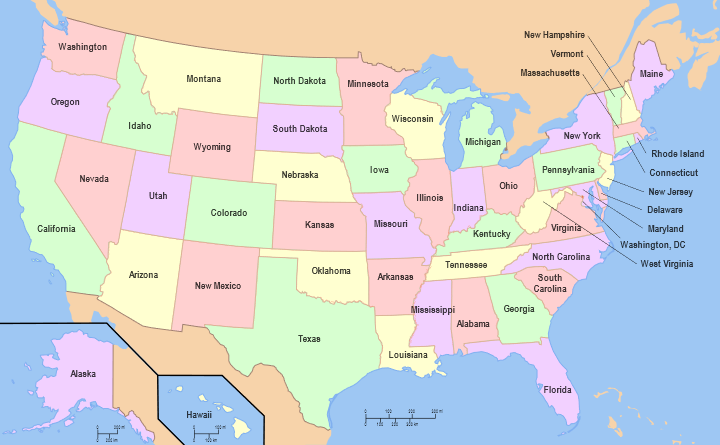


 RSS Feed
RSS Feed